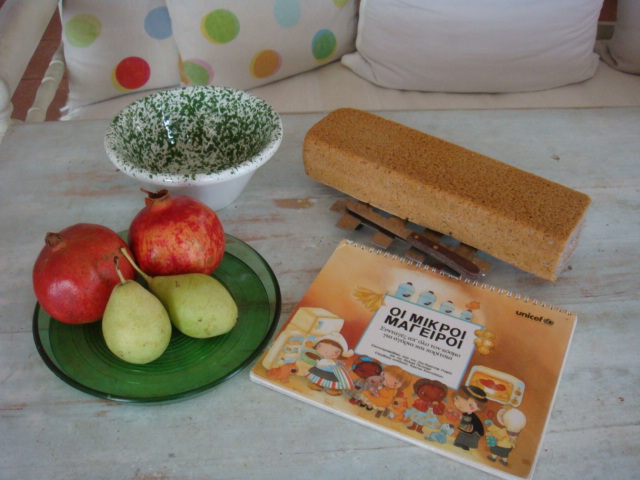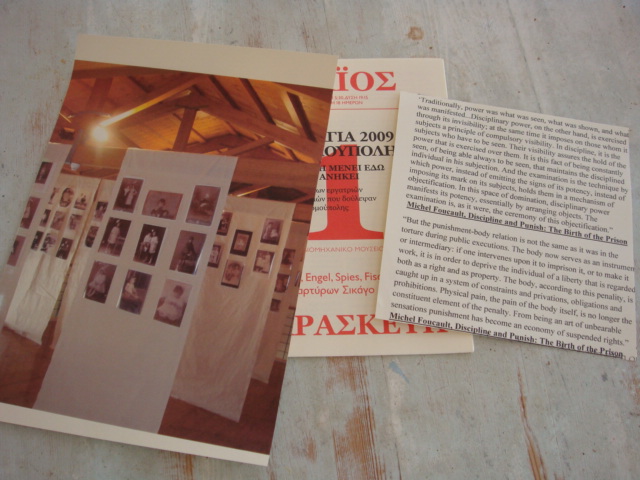 “Physical pain, the pain of the body itself, is no longer the constituent element of the penalty. From being an art of unbearable sensations punishment has become an economy of suspended rights” Michel Foucault
“Physical pain, the pain of the body itself, is no longer the constituent element of the penalty. From being an art of unbearable sensations punishment has become an economy of suspended rights” Michel Foucault
Around a table meals are shared, stories are told of where we’ve been and where we might be going, confessions are made, questions are debated and laughter is generated. During shared meals with others we can get a glimpse of our connectivity and common humanity and we get an opportunity to nourish others and to receive nourishment from others, and from a religious or spiritual perspective to take up a place at the table may include the notions of a sacred space and to be worthy of. Shared meals have the potential to nourish us emotionally, spiritually and physically. I read somewhere about the discipline of table fellowship. Our tables can then provide spaces where diversity could be invited, new stories attended to and bridges created; a place of connection and belonging. Jesus had made it a practice to eat with marginalized people, ‘the sinners and the outcasts’, which was a practice denounced by the Pharisees and dignitaries of the time; however, he had chosen to not go along with the customs of his day. He practised table fellowship and he invited all to the table. It may, therefore, be worthwhile pondering on questions like: How inclusive is the table? Or How big is God’s table? Who gets to determine its width and breadth? What are the consequences of exclusivity? Is there room for all or are only certain people welcome at the table or the club? What are the benefits of being in their club?
Why am I writing this today? Firstly, because belonging has been something that has always interested me and I have also had to wrestle with. Plus, I found a lot of photos of meals I had hosted over time, meals that included friends and family, but also acquaintances and colleagues and students. With some classes over the years, as a treat and a fun way to learn food related vocabulary and practise speaking, we had prepared simple meals in my kitchen (the UNICEF cook books for children are great for kids to engage in making food) and then enjoyed a meal with food that they had prepared themselves. I had always connected meals to more than simply eating to refuel, probably because I grew up in a family where my mother cooked and offered meals to others on all sorts of occasions when I was a child, Some Sundays, even though she was worn out by her long working weeks, she would get up to make ‘loukoumades’, perfectly shaped fluffy dumplings, something I never mastered, and Greek coffee served in the tiny porcelain cups she had brought from Greece. I set the table using my mother’s good china and then we invited the people who were staying in our house for breakfast. It was an offering and an opportunity for the adults to chat and tell stories of longing and missing their kin back in Greece and their frustrations and financial struggles, but also folklore tales, which I still vaguely remember. Forming a circle round a table and sharing a meal creates the possibility of many outcomes both positive and negative; one being a sense of connection, respect and belonging along with pleasure, physical nourishment and the satisfaction of our many taste buds.
 A table can become a metaphor for all the ways we get together, at home, in class, in community. We gather at the table of kin and friendship, of celebration and even of mourning loved ones, of learning, and of breaking and sharing bread. Also, regarding tables a few days ago I briefly referred to how the artist Marina Abramović has explored the relationship between performer and audience, the limits of the body and the possibilities of the mind. In particular, her art performance Rhythm O, an experiment to explore the relationship between the artist and the public, which as I mentioned brought to my mind the Stanford prison experimented, by Phillip Zimbardo, which demonstrated that when people are empowered by authority or lack of external laws and rules, there is the possibility of their becoming abusive to those without power, had included a long table covered with a white tablecloth. Seventy two objects that the public could use to interact with her, like grapes, honey, alcohol and make-up, but also things like matches, a brush, a bone, a newspaper, a camera, razors, scissors, knives, chains and a loaded gun were laid on it. After the performance she said: ‘the experience I learned was that … if you leave decision to the public, you can be killed… I felt really violated: they cut my clothes, stuck rose thorns in my stomach, one person aimed the gun at my head, and another took it away. It created an aggressive atmosphere. After exactly 6 hours, as planned, I stood up and started walking toward the public. Everyone ran away, escaping an actual confrontation’. It was as if through her willingness to make herself the art object and to endure the suffering in public she had made her commitment to something unquestionable. Her art performance could also be viewed as an offering of herself as a canvas on which the violence became visible, an act of ‘bearing witness’ to acts, practices, dynamics or narratives. The circle around you has the power to diminish you, but it can also be a circle of light, support and warmth, like a nourishing meal – a homecoming.
A table can become a metaphor for all the ways we get together, at home, in class, in community. We gather at the table of kin and friendship, of celebration and even of mourning loved ones, of learning, and of breaking and sharing bread. Also, regarding tables a few days ago I briefly referred to how the artist Marina Abramović has explored the relationship between performer and audience, the limits of the body and the possibilities of the mind. In particular, her art performance Rhythm O, an experiment to explore the relationship between the artist and the public, which as I mentioned brought to my mind the Stanford prison experimented, by Phillip Zimbardo, which demonstrated that when people are empowered by authority or lack of external laws and rules, there is the possibility of their becoming abusive to those without power, had included a long table covered with a white tablecloth. Seventy two objects that the public could use to interact with her, like grapes, honey, alcohol and make-up, but also things like matches, a brush, a bone, a newspaper, a camera, razors, scissors, knives, chains and a loaded gun were laid on it. After the performance she said: ‘the experience I learned was that … if you leave decision to the public, you can be killed… I felt really violated: they cut my clothes, stuck rose thorns in my stomach, one person aimed the gun at my head, and another took it away. It created an aggressive atmosphere. After exactly 6 hours, as planned, I stood up and started walking toward the public. Everyone ran away, escaping an actual confrontation’. It was as if through her willingness to make herself the art object and to endure the suffering in public she had made her commitment to something unquestionable. Her art performance could also be viewed as an offering of herself as a canvas on which the violence became visible, an act of ‘bearing witness’ to acts, practices, dynamics or narratives. The circle around you has the power to diminish you, but it can also be a circle of light, support and warmth, like a nourishing meal – a homecoming.
